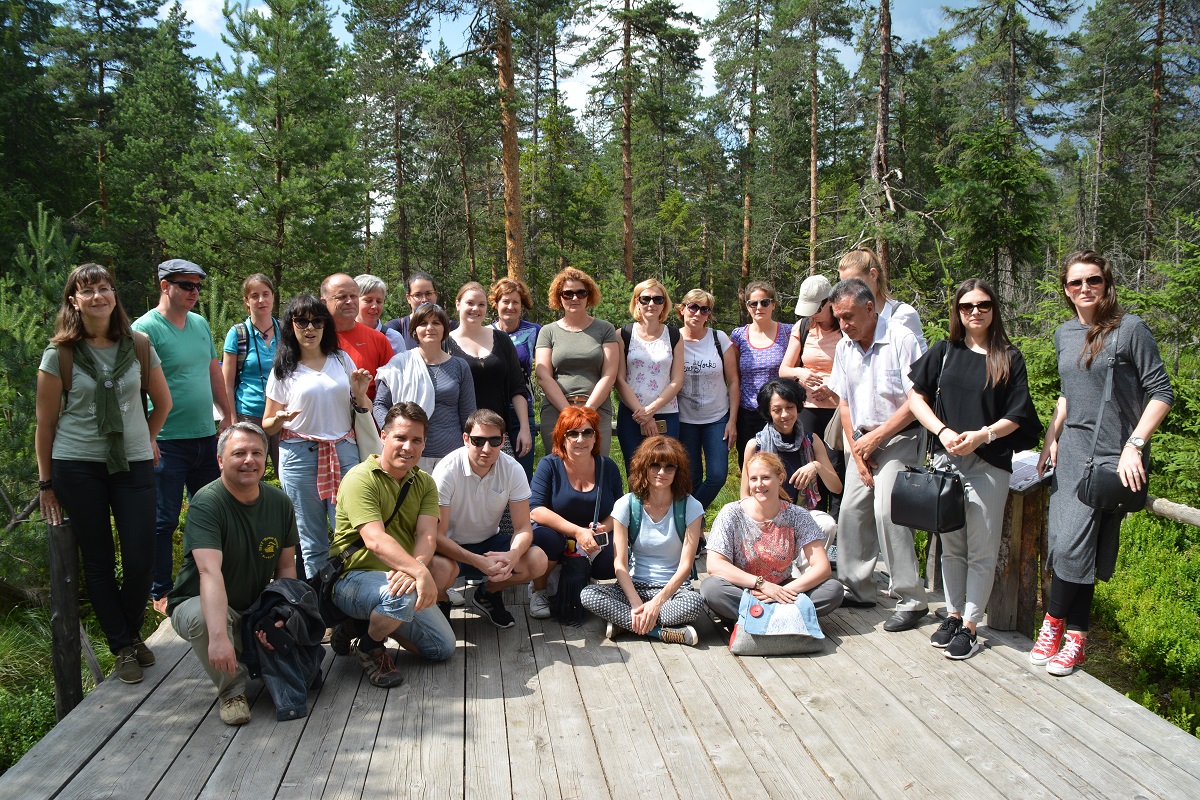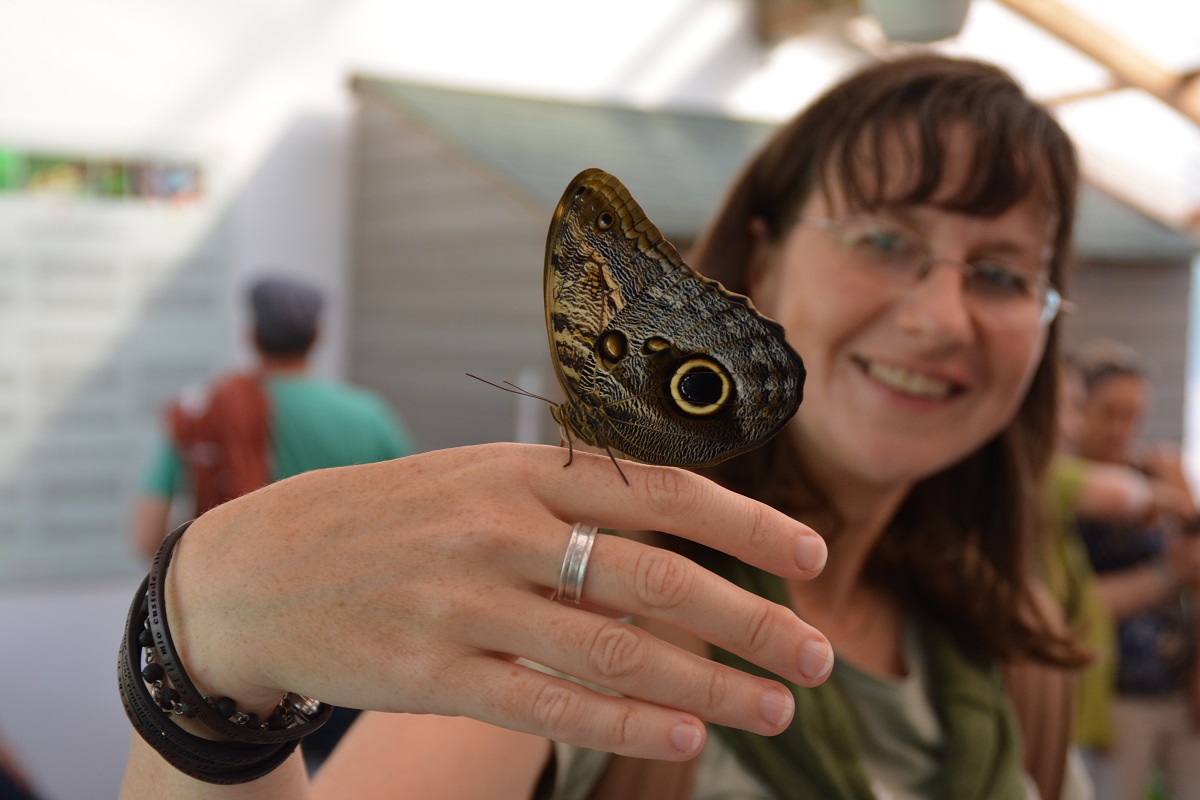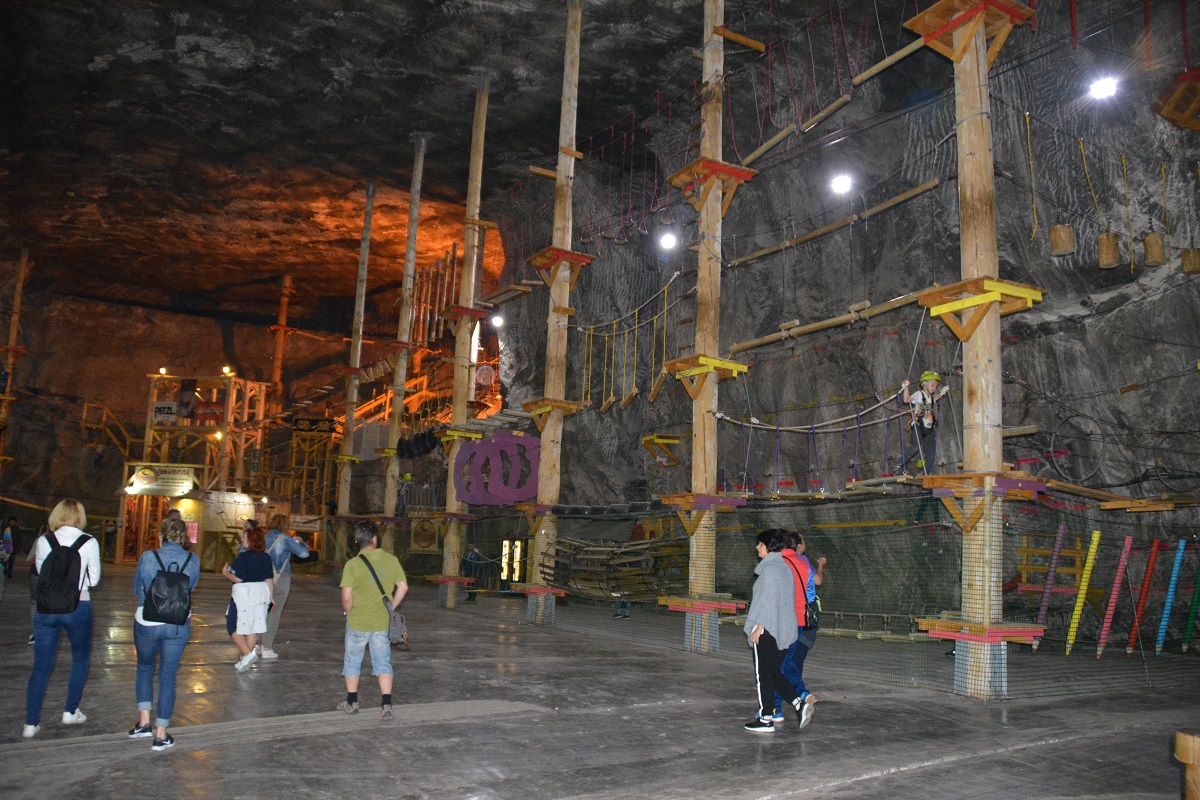INSiGHTS - partners learning about destination management and product development
02-08-2018
In the eastern part of Transylvania, Harghita County lies in a depression surrounded by the Eastern Carpathians. Due to its geographical position, Harghita County offers a variety of landscapes and natural wonders, thus making it great for the tourists who are looking for healthy and green destinations. Odorheiu Secuiesc, a city in Odorheiu region rich with hills covered with leafy vegetation and warmer climate was the location of the INSiGHTS project partners meeting held from June 18–21, 2018 by Harghita County Council. The focus of the visit was on the transnational learning and exchange on green, healthy tourism, destination management and product development. Partners were introduced to the best practices of Harghita County, starting with a taiga reservation, a butterfly house and a salt mine, followed by the Legendárium studios, the Szekler gates and a cheese manufacture.

Partners met on Monday afternoon at the 4-star Septimia Resort-Hotel in Odorheiu Secuiesc and were welcomed by Botond Barna Bíró, the vice-president of Harghita County Council and by Lóránt Verzár, the director of Septimia Resort-Hotel. The welcome speech was followed by Dr. Zoltán István Miklós, the director of the Haáz Rezső Museum of Odorheiu Secuiesc, who gave a short presentation of Harghita County, followed by a Master Class on Tourism destination management schemes and product development presented by Michael Meyer from CEEweb. Parts of the Master Class were also three professional presentations on Szekler product development presented by István Márton from Rural Development Association of Harghita County Council; Via Mariae pilgrimage route presented by Károly Szabó from Harghita Community Development Association and Mountain tourism presented by Örs Fekete form Mountain Rescue Service of Harghita County Council.
Tuesday morning started with the steering committee meeting and the thematic meeting in the Septimia Resort-Hotel. There were project management issues and communication activities presented along with the methodological guide for national tourism policy assessment.
The morning meetings were followed by a traditional Szekler lunch, held at the Gizi restaurant its interior was decorated with handcrafted products making the place very cosy. After lunch, partners travelled to Fântâna Brazilor where they took a tour of the peat bog. Partners discovered a unique habitat, some special phenomena and rare relict species through the taiga educational trail. The next stop of the study visit was Praid, where partners visited the butterfly house which offers moments of relaxation and excitement to both children and adults. It is the first permanent butterfly house in Romania. Built for this purpose and opened in 2012 it houses up to 9 different common species and several hundred specimens of butterflies. Since the life span of a butterfly is only a few weeks, the species are always changing, thus offering visitors a chance to experience something different all the time.

The study visit was concluded with a visit of the Salt mine in Praid. Having estimated reserves of 50 billion tonnes of NaCl it represents the largest salt reserve in Romania. The underground visiting space is 120 m below the surface and offers visitors the saline air beneficial to the respiratory system. With many sports facilities, playground for children and a chapel it offers many of the comforts of the life above ground.

On Wednesday partners travelled to the Legendárium headquarters in Odorheiu Secuiesc were the production of the animated series on the mysteries of Transylvanian legends takes place. Partners were familiarized with the animation process and watched one of the cartoons. This was followed by a visit of Băile Szejke where a huge park dedicated to Szekler folklore is under construction. Partners took a walk uphill along the permanent exhibition of the traditional Szekler gates to the Orbán Balázs memorial. After that, partners travelled to Merești and visited cheese manufacture. The family who runs the manufacture is a third generation of cheese makers. They have transformed a traditional barn so they can produce cheese on the ground floor and live upstairs. The presentation of the manufacture was followed by cheese tasting.

After lunch partners met again for a critical classroom in which discussion about integrated management schemes was held. In the evening partners gathered one last time for dinner in order to officially conclude the meeting.
The next multilateral meeting will take place in Komárno in November 2018.
